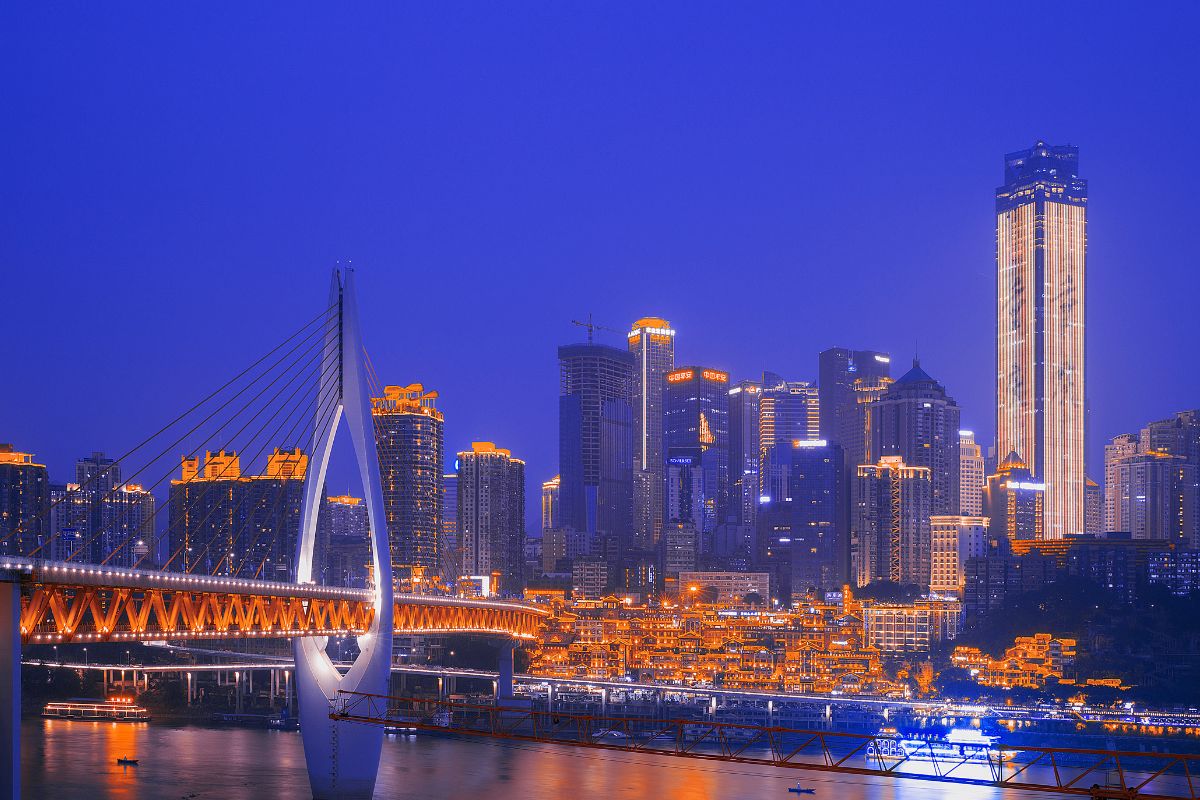Nestled within the mountainous landscapes of central China lies a city of staggering proportions that defies conventional urban definitions. Chongqing, a sprawling metropolis extending over 82,400 square kilometers, has quietly claimed the title of the world’s largest city by area while remaining surprisingly unknown to many outside Asia. This colossal urban expanse, home to over 32 million residents, surpasses the size of entire countries yet somehow stays below the global radar.
The hidden giant: discovering Chongqing’s extraordinary scale
When most people think of the world’s largest cities, familiar names like New York, Tokyo, or Mexico City typically come to mind. However, these iconic metropolises pale in comparison to Chongqing’s vast expanse. This Chinese mega-city covers an area larger than Austria or Ireland, spanning roughly 82,400 square kilometers—approximately 15% of metropolitan France’s total territory.
Chongqing’s immense scale isn’t merely administrative—it represents a unique geographical and urban reality. Unlike traditionally dense cities built on relatively flat terrain, Chongqing expands across a complex, mountainous landscape that necessitates three-dimensional development. The city has evolved vertically as much as horizontally, creating an urban environment unlike any other on Earth.
To put Chongqing’s size into perspective, consider how it compares to other major global territories:
Beyond its physical dimensions, Chongqing’s population has experienced explosive growth. From a modest 2.3 million residents in the 1970s to approximately 32 million today—comparable to Canada’s entire population—the city exemplifies China’s massive urbanization initiative. While the municipality encompasses rural areas, more than 70% of its inhabitants live in urban zones, creating one of the world’s most populous metropolitan regions.
A vertical wonderland: Chongqing’s extraordinary geography
Located at the confluence of the Yangtze and Jialing rivers in south-central China, Chongqing presents a topographical marvel that has shaped its distinctive urban development. The city’s dramatic landscape of steep hills, deep valleys, and mountainous terrain has necessitated innovative architectural and infrastructure solutions that defy conventional urban planning.
British journalist Oliver Wainwright, familiar with the area, describes a city where roads wind along cliff faces, metro lines cut through buildings, and cable cars connect rooftops to valleys. Navigating Chongqing often involves ascending endless staircases to reach underground elevators before crossing suspended walkways to buildings that plunge dozens of floors downward. This vertiginous urban landscape creates a three-dimensional city experience unmatched anywhere else in the world.
The mountainous setting has transformed ordinary urban features into extraordinary engineering feats:
- Highways that snake between skyscrapers at multiple levels
- Residential buildings with multiple ground floors at different elevations
- Pedestrian bridges connecting buildings at the 20th floor and higher
- Underground transport networks that emerge midway up mountainsides
- Elevators that function as public transportation between neighborhoods
This vertical development has created a cityscape where massive infrastructure projects including record-breaking bridges have become commonplace. Chongqing’s topography demands architectural innovation, resulting in a metropolis that grows upward and outward simultaneously.
A millennia-old urban center
While Chongqing’s modern growth is impressive, its historical significance stretches back over 3,000 years. The city has served as a national capital, a strategic port on the Yangtze River, and a major commercial crossroads long before China’s contemporary industrial rise. During World War II, Chongqing even functioned as China’s provisional capital.
Today, the city maintains its strategic importance as a crucial logistical hub for interior China and a symbol of the country’s economic development. This blend of ancient heritage and futuristic urban planning creates a metropolis where traditional neighborhoods exist alongside hypermodern districts, often within the same visual frame.
China’s urban revolution and Chongqing’s global significance
Chongqing exemplifies China’s unprecedented urbanization—a transformation that has reshaped global demographics. In 2002, only 36% of China’s population lived in cities. By 2050, this figure could reach 70%, representing a migration of over 300 million people to urban areas in just a few decades.
This massive shift has accelerated technological innovation, particularly in infrastructure management. Advanced robotics and automation systems have become essential for maintaining Chongqing’s complex water and energy networks across its challenging terrain.
Chongqing’s development model provides insights into future urbanization patterns worldwide. As global populations concentrate in megacities, the challenges faced and solutions pioneered in this Chinese metropolis offer valuable lessons. The city represents not an artificial urban experiment but rather the product of geography, tradition, and deliberate policy converging into a new urban paradigm.
While geographical transformations like continental rifts forming new oceans happen over geological timescales, Chongqing demonstrates how human activity can rapidly reshape landscapes within a single generation. The city’s evolution suggests that our conventional understanding of urban environments continues to evolve as metropolitan areas expand, verticalize, and redefine themselves.
The invisible megacity
Despite its enormous dimensions and population, Chongqing remains relatively unknown outside Asia. This obscurity stems partly from pronunciation challenges for Western speakers and misconceptions about its urban character. Because its massive population spreads across such an extensive territory, Chongqing is sometimes mischaracterized as an extended rural zone rather than recognized as the urban colossus it truly is.
The disconnect between Chongqing’s global significance and its international recognition highlights how Western-centric urban studies often overlook transformative developments occurring elsewhere. As Asia continues developing megacities that challenge traditional urban definitions, our understanding of what constitutes a “city” must evolve.
Chongqing represents a unique urban phenomenon—a bewildering blend of nature, history, and extreme urbanization that may well represent the future of 21st-century megacities worldwide. As urbanization accelerates globally, this Chinese giant offers a glimpse into tomorrow’s metropolitan landscapes: vast, vertical, and vastly different from the cities we’ve known before.
